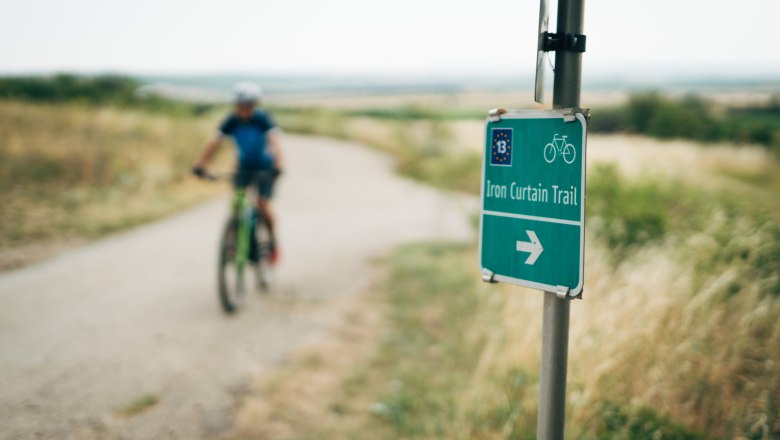Old borders, new freedom
Around 10,000 kilometres on an e-bike: Joachim Franz followed the historical traces of the "Iron Curtain" and rediscovered Europe in the process.
At the age of 30, he quit his job as a shift worker at Volkswagen and changed his life from the ground up. Today Joachim Franz is a successful extreme athlete, book author and motivational coach. He has also ridden the longest long-distance cycle route in Europe on his e-bike.
The Iron Curtain Trail crosses 20 countries over a length of more than 9,950 kilometres - from the Barents Sea in Norway to the Black Sea in Bulgaria. Today, the historic cycle route along the "Iron Curtain" stands for the reunification and peaceful revolution of Europe. 25 years after the fall of the border fences, Joachim Franz takes to the saddle of his e-bike and follows the former course of the border: More than 200 km of his route lead through the Waldviertel and Weinviertel along the Austrian-Czech border. We met the likeable adventurer to talk about border experiences, feelings of freedom and prejudices against e-bikes.

You cycled along the Iron Curtain Trail on an e-bike in 2014 - how did this adventure come about?
It wasactually a coincidence. As part of a programme by the German government to promote electric mobility called "Schaufenster Elektromobilität", (“Electromobility Showcase”) my partner Christian Roth and I were approached and asked if we would like to take part. We didn't think twice about it, but simply seized the opportunity.
But you had certainly prepared, trained and planned the route?
We had a few months' lead time. Our training consisted largely of getting used to the geometry and the handling of an e-bike when coming from road cycling. And we should remember that in 2014, e-bikes were not as widespread as they are today. Even we had prejudices against a bike with an electric motor and thought to ourselves, "That's something for old people, isn't it?". In reality, however, e-bikes create mobile freedom where previously there were limits - we found this very consistent and suitable for our project. We also wanted to cycle from the Norwegian-Russian border near Kirkenes to the Turkish-Bulgarian border on the Black Sea within a month. On average, we were on the saddle for 300 to 350 km per day, which would not have been possible without electronic support.

So you turned on the "turbo" and checked how long the batteries last?
Not quite (laughs). We rode the entire route on the "Tour" setting, if only for reasons of honour. In tour mode you have to maintain a high cadence - so it was quite strenuous despite the electric drive.
So while you were pushing topographical boundaries, you were also pushing your physical limits?
Absolutely! For logistical reasons, we were accompanied by a team of photographers and filmmakers, as we wanted to document this journey. So we didn't carry our luggage on the bikes. Despite everything we had to find a place to sleep every evening after cycling and plan the next day's stage.

Where did you spend the night?
We simply knocked on people's doors and asked if we could pitch our tents in their gardens. And we have been welcomed everywhere with open arms - well, everywhere apart from only one exception in Germany (laughs). This is exactly why this trip was so successful. It showed that Europe has overcome its borders not only in the physical sense, but also in people's minds. That’s why I also advise every young person to ride this historic cycle path.
200 km of the Iron Curtain Trail run through the beautiful Waldviertel. What memories do you have of this section of the route?
Before my eyes I see green fields, blue rivers and rugged rocks. Our route led over a landscape of hills and valleys. Hardly any border section was so different and imposing at the same time - that was varied for the mind and exciting for the body. I also remember a bizarre encounter with a triathlete.
Now we’re curious.
He came up in front of us on a country road and was pedalling hard. We overtook him, which must have spurred him on, because not even a few kilometres later he had caught up with us again. When he then discovered the batteries on our bikes, he cursed loudly. As I said, e-biking was still frowned upon back then. But then he asked what we were planning to do with our bikes, and when we told him about our adventure, his attitude suddenly changed for the better.
How has this journey from Norway via the central European Waldviertel to the coast of Bulgaria changed you?
We are certainly no longer the people we were before. We met countless contemporary witnesses on our journey, their stories we will remember forever. Only those who know the past can shape a future full of freedom.